
The site of an infamous B.C. mining disaster could get even bigger. This First Nation is going to court — and ‘won’t back down’
Xatśūll First Nation is challenging B.C.’s approval of Mount Polley mine’s tailings dam raising. Indigenous...
When Heiltsuk elder Liz Brown was just a little girl, her mother sat her down on a chair, looked her in the eyes and told her to pay real close attention to detail.
Every wedding. Every community affair. Every custom. Every taboo.
The importance of handing down names and laws and stories from one generation to the next was impressed upon Brown, even as a little girl.
“Every week my mother would sit me down and tell me what I could not do, over and over and over again,” Brown said.
“She said … you need to watch and you need to listen, so you can learn everything. And I remember everything.”
For the Heiltsuk Nation, oral tradition was essential to the fight to keep their culture and traditions alive.
Unlike their bodies and unlike their big houses, oral tradition was something that couldn’t be buried.
Or burned.
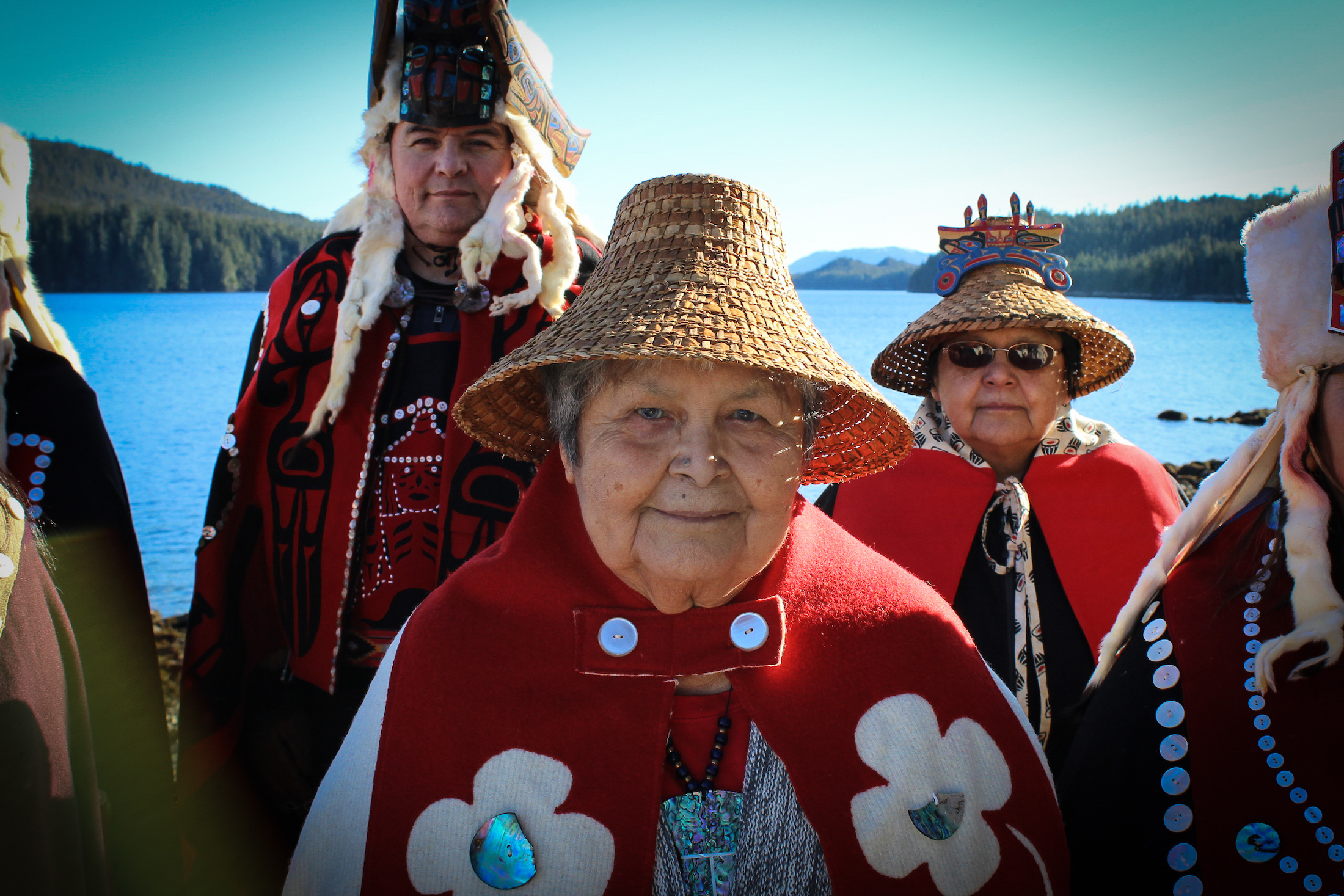
Elder Elizabeth Brown stands in front of her hereditary chiefs Frank Brown (left) and Anne Housty (right), beaming with pride as the dreams of her ancestors come true. Photo: Heiltsuk Tribal Council
Like many coastal First Nations in what is now known as British Columbia, recent Heiltsuk history is one filled with colonial violence. While archeological evidence dates the community back over 14,000 years, the last 200 years involves settlers arriving on Canada’s western shores, swept up in the promise of its riches: lumber, fish, fur.
The Heiltsuk nation’s customs and systems of governance were seen as an impediment to resource extraction and what settlers didn’t understand, they feared, and by 1885, the touchstones of community gatherings and traditional customs, like potlatching, were formally outlawed across Canada.
By 1900, Heiltsuk communities were finding their masks, bentwood boxes, regalia and canoes pilfered or disappeared. The grand places of governance and ceremony — the big houses, the house posts — were hacked down and sent away. Or simply burned to the ground.
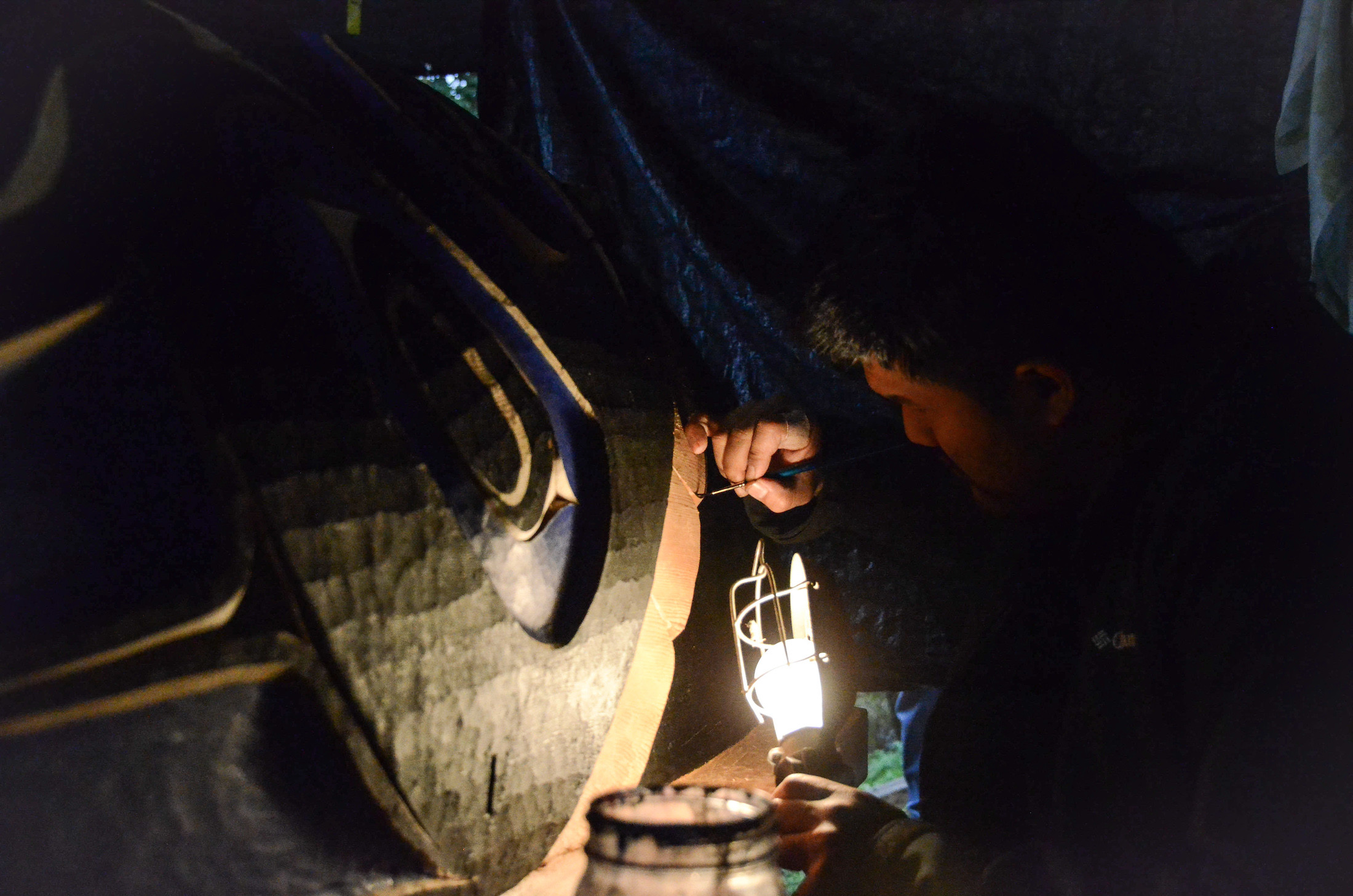
Phil Gray, who is Ts’msyen and Cree, worked with Heiltsuk carver Ian (Nusi) Reid to craft elaborate posts for the big house. The pair saturated themselves in the study of traditional Heiltsuk-style poles, art and design. They wanted to bring to life the elements of “old true Heiltsuk style,” Reid said. Photo: Heiltsuk Tribal Council
For elders such as Brown, the strategic ruin of the Heiltsuk community and culture is a part of living memory. Amid the hostility of state law, the preservation of Heiltsuk tradition was forced underground, into the hands of little girls like Brown — customs maintained quietly and with great care, in whispers passed from grandmother to mother to child.
Brown said her people would gather in their homes with hereditary chiefs so they could get on with matters of business, far from the eyes of Indian agents, priests or others charged with prohibiting their ways of life.
She admires the strength of her ancestors, who had to make do with a village hall that served as a de facto big house for weddings, naming ceremonies, tombstone rites or the transfer of power.
The resurrection of culture was suppressed for decades after traditional places like big houses were destroyed — the potlatch ban wasn’t lifted until 1951.
And a big house wouldn’t be lifted in the Heiltsuk village for another 120 years. That is, until now.
In less than one week, Brown’s effort to hold onto her community’s traditions and her mother’s devoted guidance will come full circle with the official opening of the Gvúkva’áus Haíłzaqv (Heiltsuk big house) in Waglisla, or Bella Bella, B.C.
“Our ancestors believed that there were three values that Heiltsuk hold in order to be a really good community,” she said. “The first one is to be respectful, the other one is to share what you have with each other, and the last one, is to work together. And those values brought us to where we are today.”
The Heiltsuk community is grinding around the clock to open the big house in time for an anticipated 3,000 guests who’ll visit across five days to celebrate the momentous occasion. Guests will join in ceremony and song, witness dancers impersonate the supernatural on the big house floor, feast on coastal delicacies and experience the full power of a people in their rightful place.
Community members are working 10 hours a day, six days a week to finish painting the front of the big house — which is 25 metres wide and 10 metres high.
Each of the logs for the big house was hand picked, locally sourced and milled. Forty locals have been employed throughout the project.
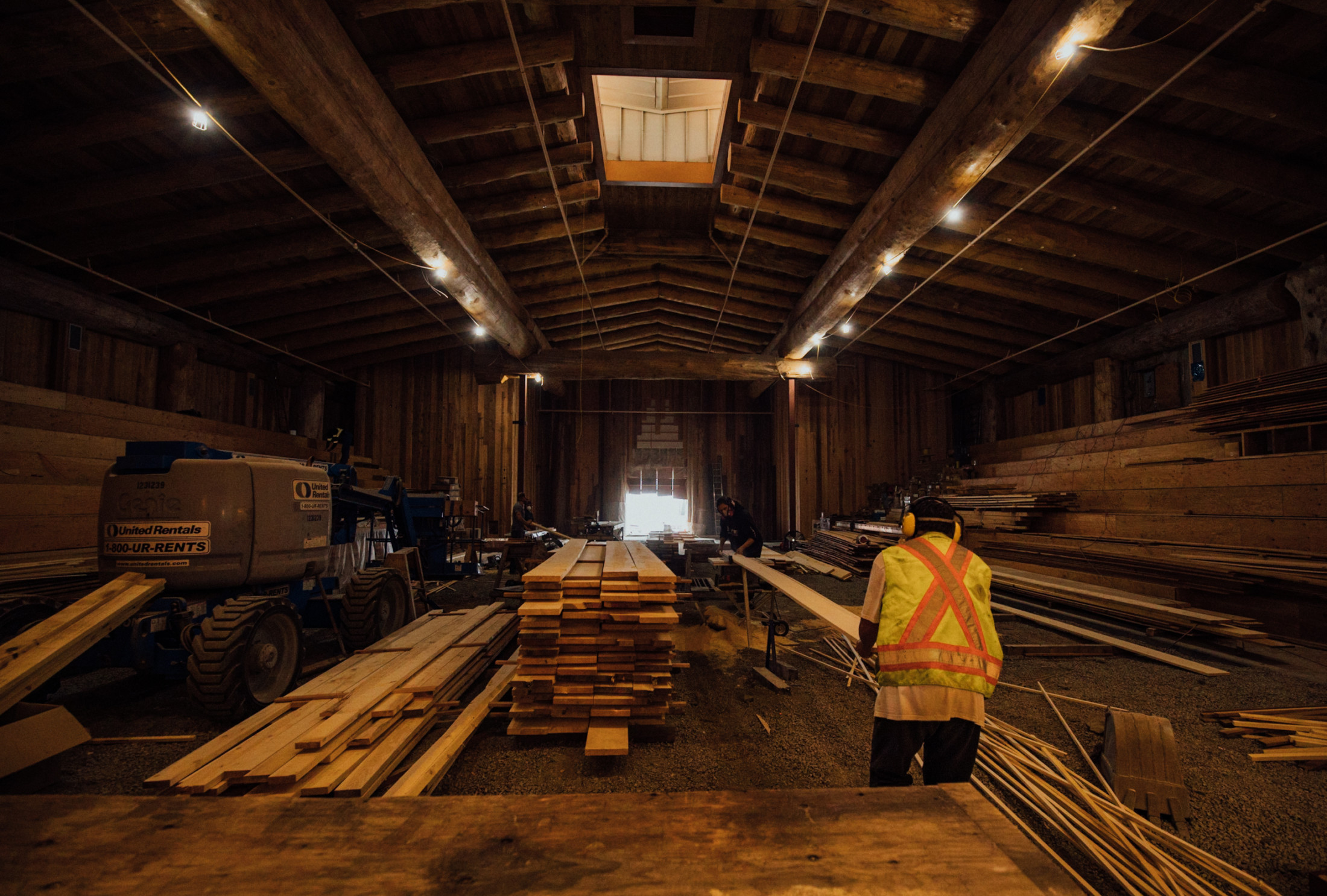
The Heiltsuk big house undergoing construction in September 2019. Photo: Louise Whitehouse / The Narwhal
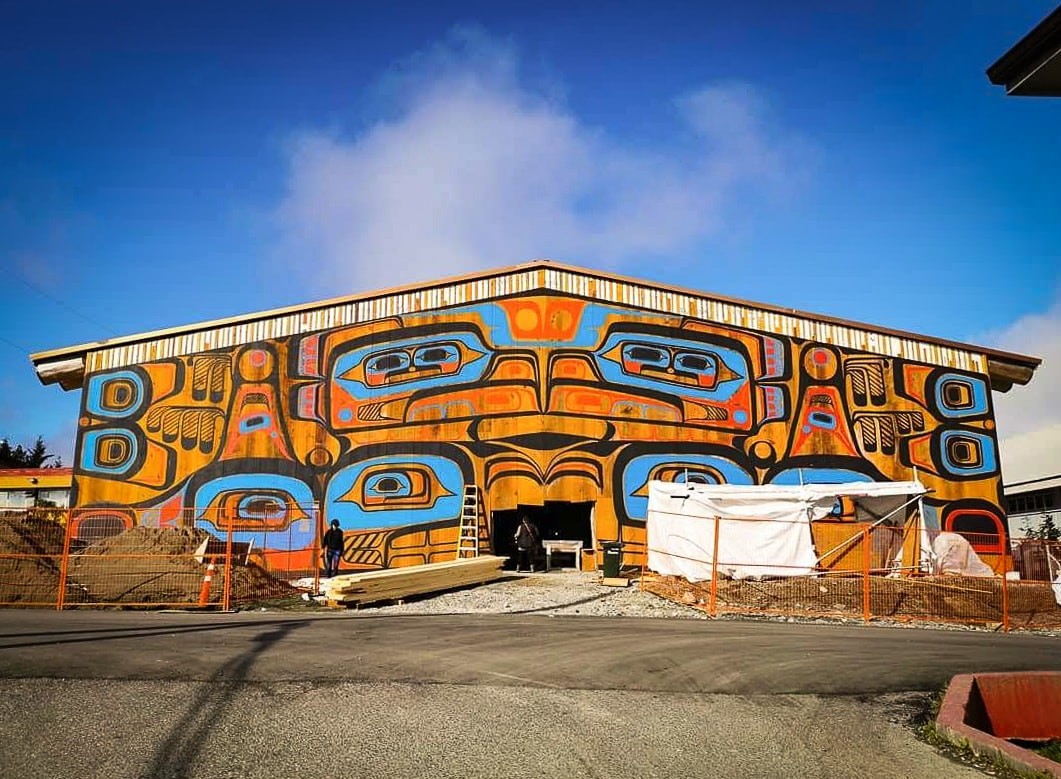
Designs on the front of the big house represent the crests of the Haíɫzaqv (Heiltsuk) Nation. Photo taken September 16, 2019. Photo: Heiltsuk member Charity Gladstone
In many Indigenous communities in B.C., traditional λiác̓i (big house) are the customary space for acts of governance and ceremony.
The ‘Namgis people have a big house in their territory in ‘Yalis (Alert Bay, Cormorant Island), built in 1999 after their original big house was destroyed.
Brown attended a potlatch at the ‘Namgis big house and said while there she felt the strong presence of the ancestors of that place. She said she expects for the Heiltsuk, it will be the same.
The event will be “a big family reunion,” she said, as relatives travel from far and wide to witness and participate in the historic occasion.
Half of Heiltsuk membership live off of the reserve, she said, but almost all of her family will be making the trip home.
Elected Chief Councillor of the Heiltsuk Tribal Council, Marilyn Slett, said it will be more than just Heiltsuk members who attend the opening.
As dancers and singers prepare, and gifts and traditional food are readied, Indigenous relatives are beginning a journey to Bella Bella from the world over.
Maori from New Zealand, people from the Yukon and across B.C.’s coast will convene in Heiltsuk territory, along with a delegation of Haida, traveling south for a totem pole raising — upholding a promise made in the Haida-Heiltsuk peace treaty, signed in 2015.
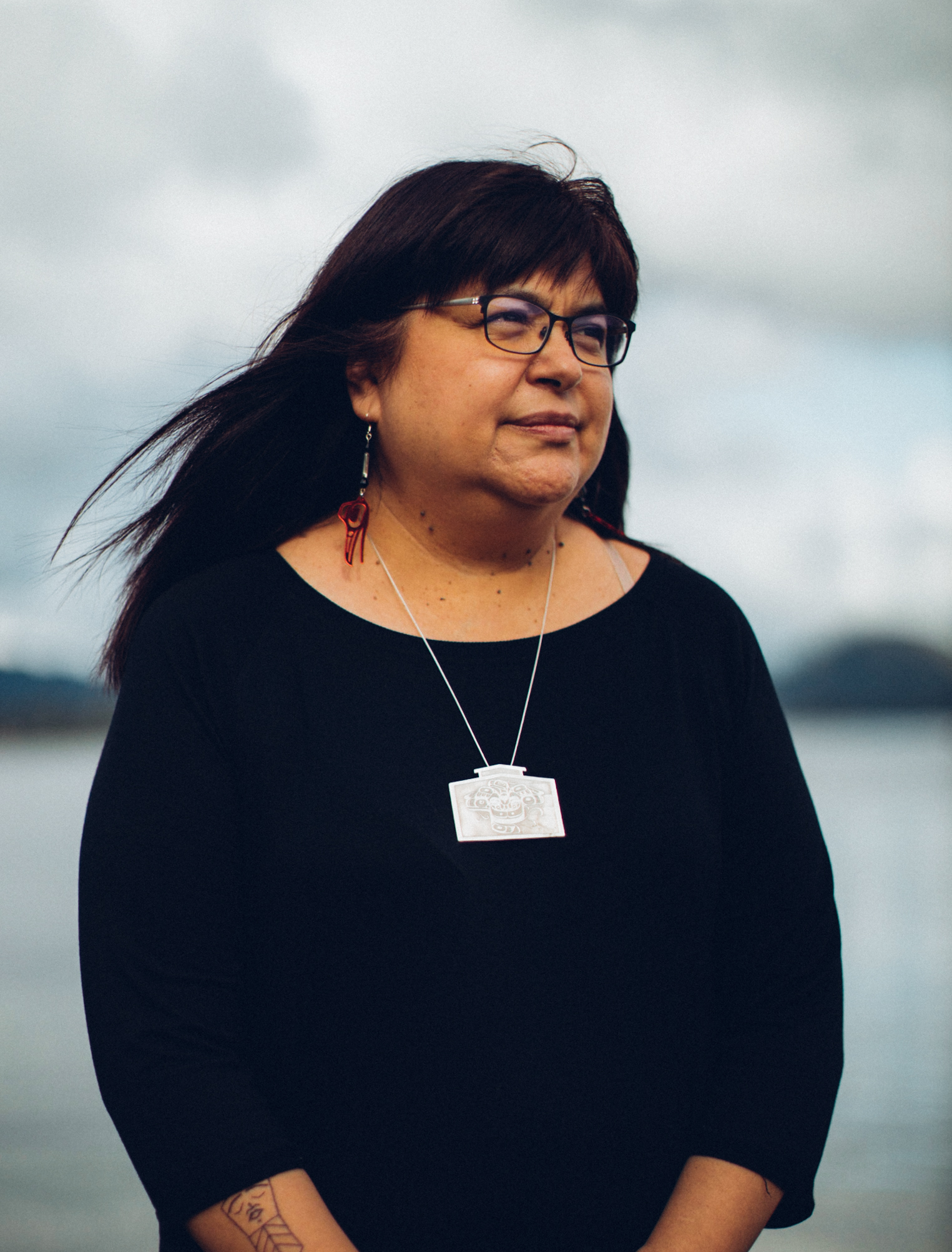
Heiltsuk Tribal Council elected chief councillor Marilyn Slett said she didn’t grow up with a sense of cultural pride. “We had 150 years of colonialism,” she said. With the raising of a big house in Bella Bella, Chief Slett said she’s witnessing the resurgence of her community and Heiltsuk culture. Photo: Louise Whitehouse / The Narwhal
Haida carver Christian White was hired by his leadership to carve a pole for the Heiltsuk. It will be raised on October 14th, the day after the initial blessing of the big house.
“The Haida and Heiltsuk were once always at war with one another,” Brown said. “They were both always sneaking around.” But during one planned Haida attack, the two groups instead began to talk and agreed on a verbal peace treaty. “At the time, they gave the Heiltsuk the right to dance what we call ‘the Haida dance,’ and later we signed a formal treaty.”
When Chief Slett was growing up, she said she didn’t have the kind of cultural pride and strength in her identity that she sees in Heiltsuk youth today.
She knew her band number, she said, and she knew she was from Bella Bella and that she was Heiltsuk, but there wasn’t space for the cultural resurgence and conversations around decolonization she witnesses today.
“We’ve had 150 years of colonialism … but today, our young people are strong and grounded in their culture and grounded in their identities,” she said. “It’s because of our grans, our grandpas, aunties, uncles, and our ancestors. It’s because of their resilience and empowerment that we’re able to do what we’re doing.”
The resurgence of culture for the Heiltsuk is about more than regaining lost tradition; it’s about healing and moving forward with pride and strength.
The nation has faced unimaginable hardships, from the threat to their right to fish herring, succeeding economic hardships, to a devastating oil spill in one of their main food harvesting areas. Like many Indigenous peoples in Canada, they have survived and found ways to thrive in the face of genocide.
The nation has demonstrated the strength and resiliency of their people, breathing life into their ancestor’s dreams, and engraving a healthy future for the next generations.
For Chief Slett, watching the rise of the big house — named, Gvákva’áus Haíɫzaqv, meaning “house of the Haíłzaqv” for all Heiltsuk people — comes with a deep emotional impact.
The external transformation mirrors a deeper renewal, she said, both in herself and her community as a whole.
“I feel my life changing on a personal level, having the big house in our community,” Chief Slett said. “And the doors haven’t even opened, it hasn’t been opened through our ceremonies yet.”
The presence of the big house, for her, transcends language: “The presence of the big house is something that can only be felt … It’s going to be, and it already is, the heartbeat of our community.”
The dream of the big house belongs to the community, but its coming to fruition has meant tapping into resources well beyond Heiltsuk members.
For several years the community has fundraised for the project, even creating a big house committee and fund to which government and industry working in their traditional territory have been encouraged to contribute.
Hereditary Chief Gary Housty Sr., a commercial fisherman for more than 50 years, said that as someone who doesn’t like to leave his territory for more than a few days, he’s seen a lot of change over the years, and a lot of people come forward to bring the big house to life.
Members from the Timber Kings television show from Williams Lake, B.C., donated lumber harvested from within Heiltsuk territory as well as time to help construct the frame of the big house. A man named Craig Woodsten from Shearwater Marine donated his barge to ship project timber for free.
Carvers, singers, dancers, artists and food-preparers have all devoted their time to the project. It’s a labour of community dedication and love, Chief Housty said.
“We cannot have a potlatch without these special people,” he said. “I call them our treasures.”
“My father passed on six years ago, at the age of 92,” he added. “I clearly remember him and others dreaming of this big day. We honour them and he will be in my thoughts as I speak. I always try and remember what he taught me.”
Chief Housty speaks of the individuals who have dedicated a special amount of time and energy to the big house, such as carver Ian Reid, known as Nusi, who has been working day and night for months trying to accomplish his task.
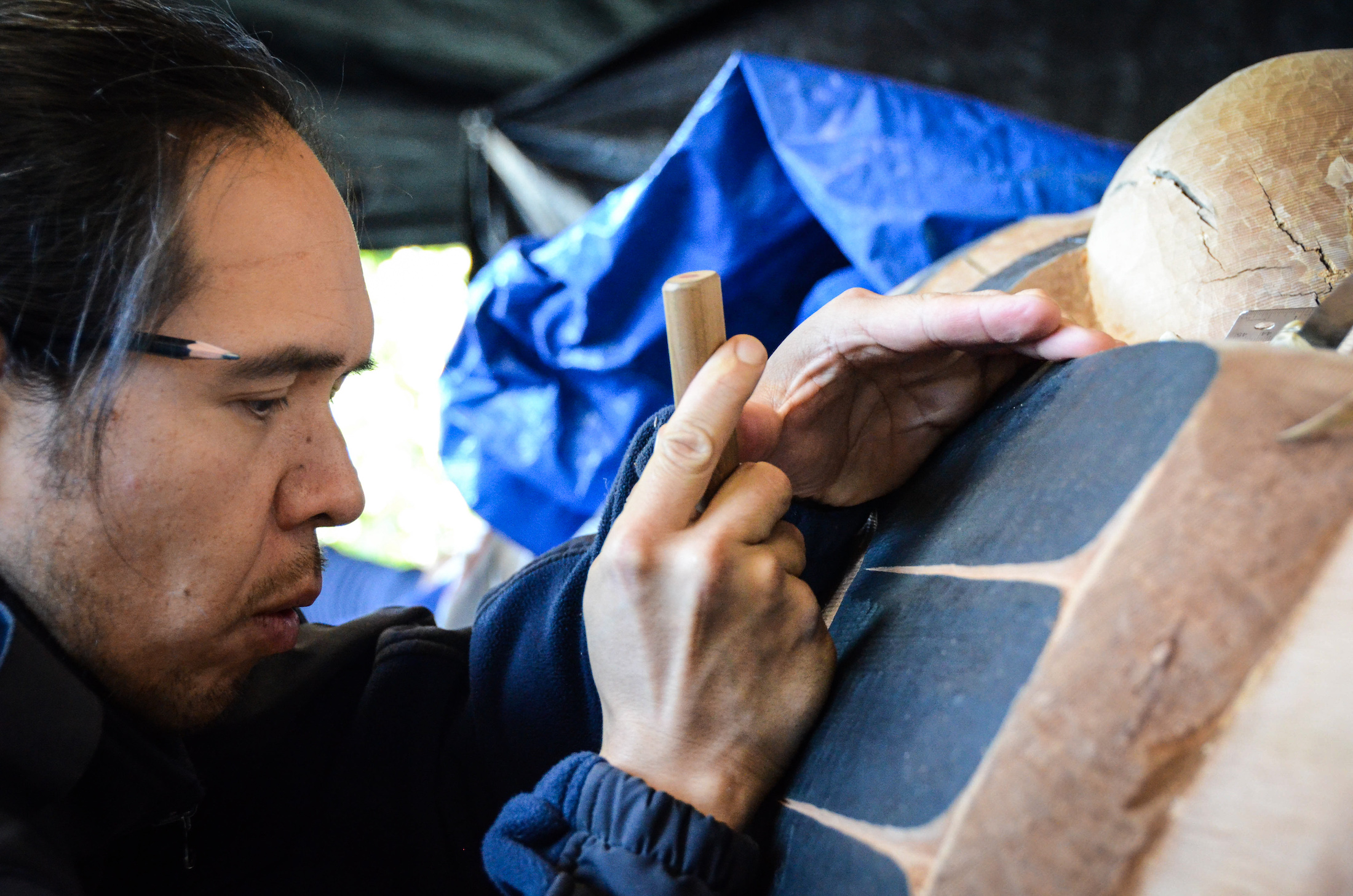
Ian Reid (Nusi) said the big house will change the lives of his people, forever. Photo: Kyle Artelle
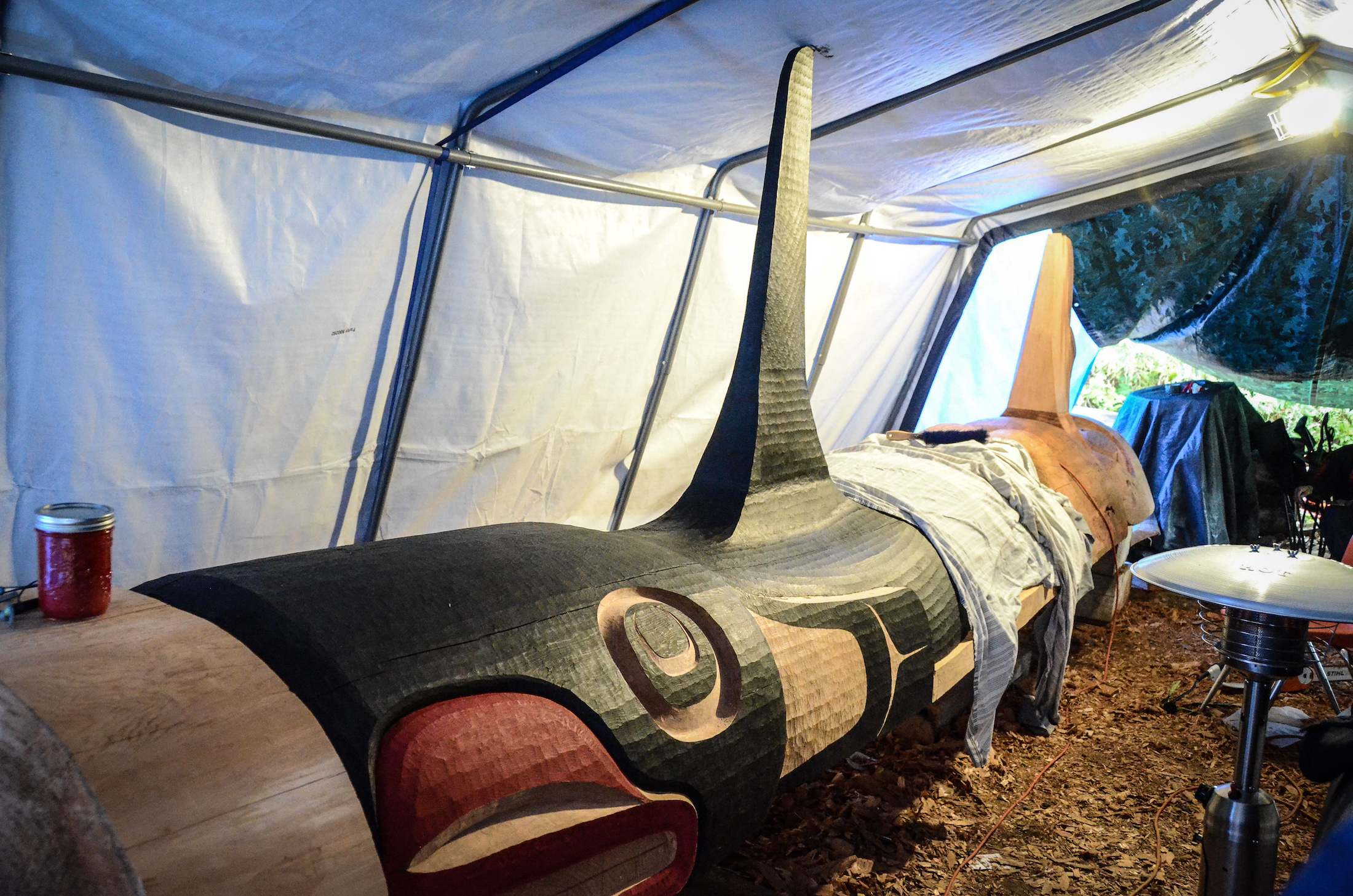
One of the house posts now standing in the Haíɫzaqv big house. “There’s all kinds of energies and ancestors with us all the time, and we’re just working through our hands and we’re just delivering,” Ian Reid (Nusi) said. Photo: Kyle Artelle
“The big house is going to change the future of our people forever … forever,” Nusi said. “I’m just a simple carver, and I’ve never carved anything on this scale before. I’m just one little person, I’m not a master carver.”
Though the task is daunting, he added, “it’s empowering.”
“The empowering part comes from thinking about how many years our people went without a big house … the empowering part comes from thinking about how the big house will reaffirm our connection to the geographic locations our names come from — the territory, the resources, and everything else … It’s going to tie all of that together.”
Nusi’s main responsibility is preparing the four posts of the big house, an essential component of the structure’s traditional design. The four posts are now standing in their forever place in the big house. They are more than wood and paint, they are spirits that have been awakened, they are beings, he said, with life forces of their own.
Nusi, like the other carvers working on the building, refused to be paid for his work.
“I told the chiefs I’d do it for free, because it needs to be done,” Nusi said. “Our people fought so hard for what we have that it feels good just to honour and uplift that.”
He added the creation of the big house has him thinking about the next generation, including his own son. Eli, who is about to turn two, spent countless hours by his dad’s side at the big house, even participating in the carving with his own little hands.
“It makes my heart sing to know my boy’s going to grow up in a big house,” he said. “The big house is going to change the future for our people, forever. It’s going to plant so many healthy seeds in the children, and their children.”
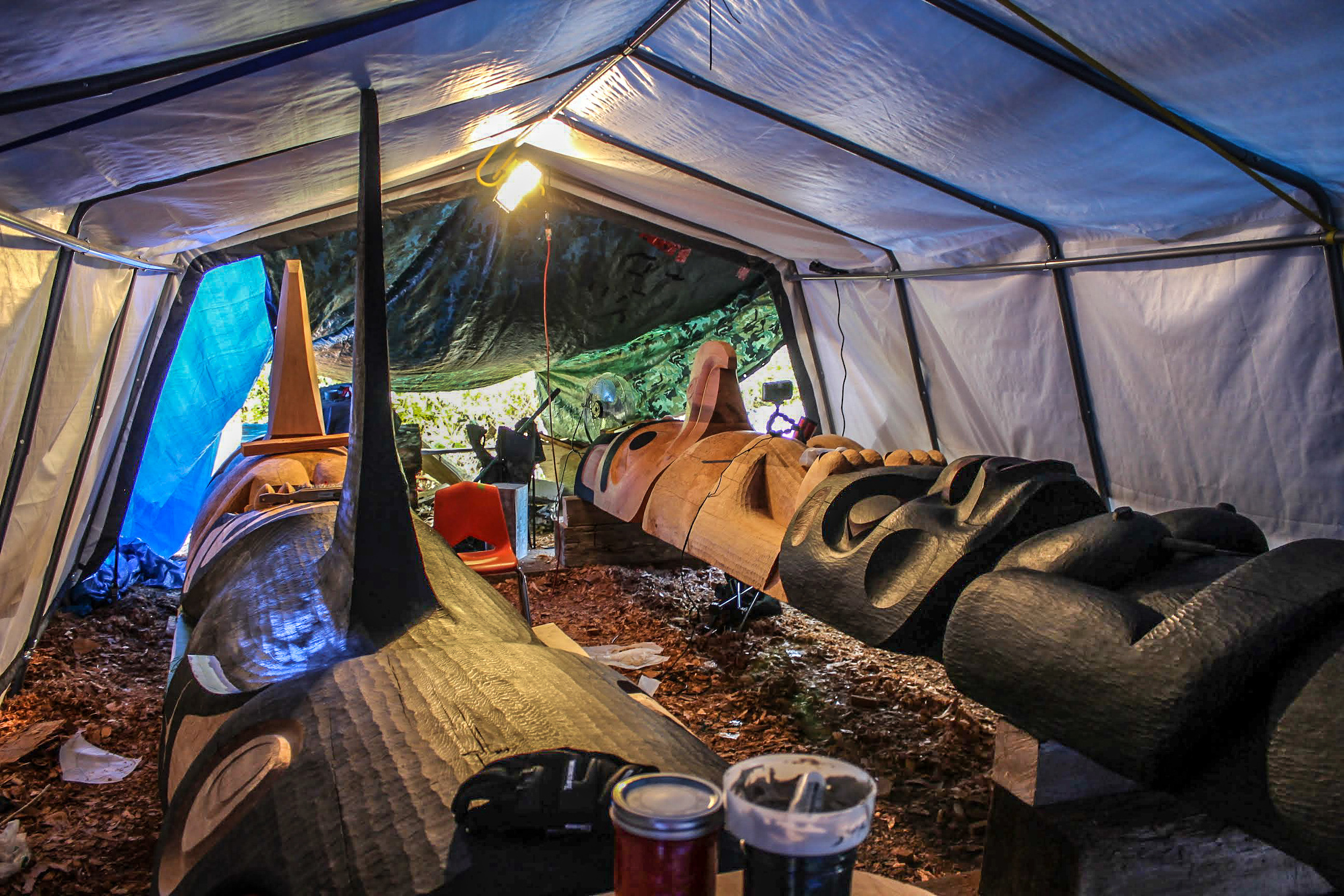
Two of the four house posts, from the W̓u̓íƛ̓itx̌v and Y̓ísdáitx̌v tribes. Photo: Kyle Artelle
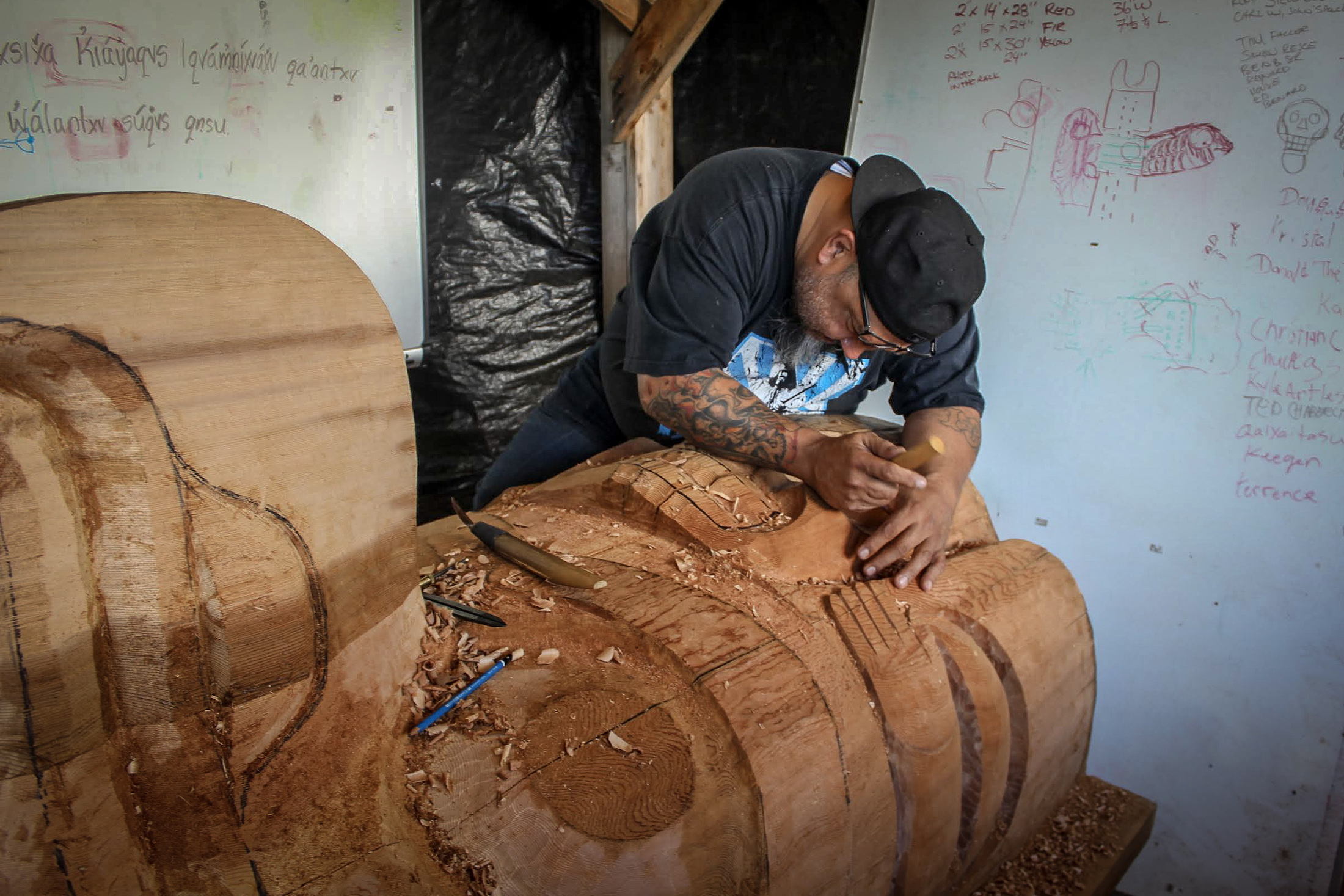
Carver Gerry Sheena (Interior Salish, from Merritt, B.C.) was one of many carvers who traveled to Waglisla (Bella Bella) to offer time and hands to the project. Photo: Heiltsuk Tribal Council
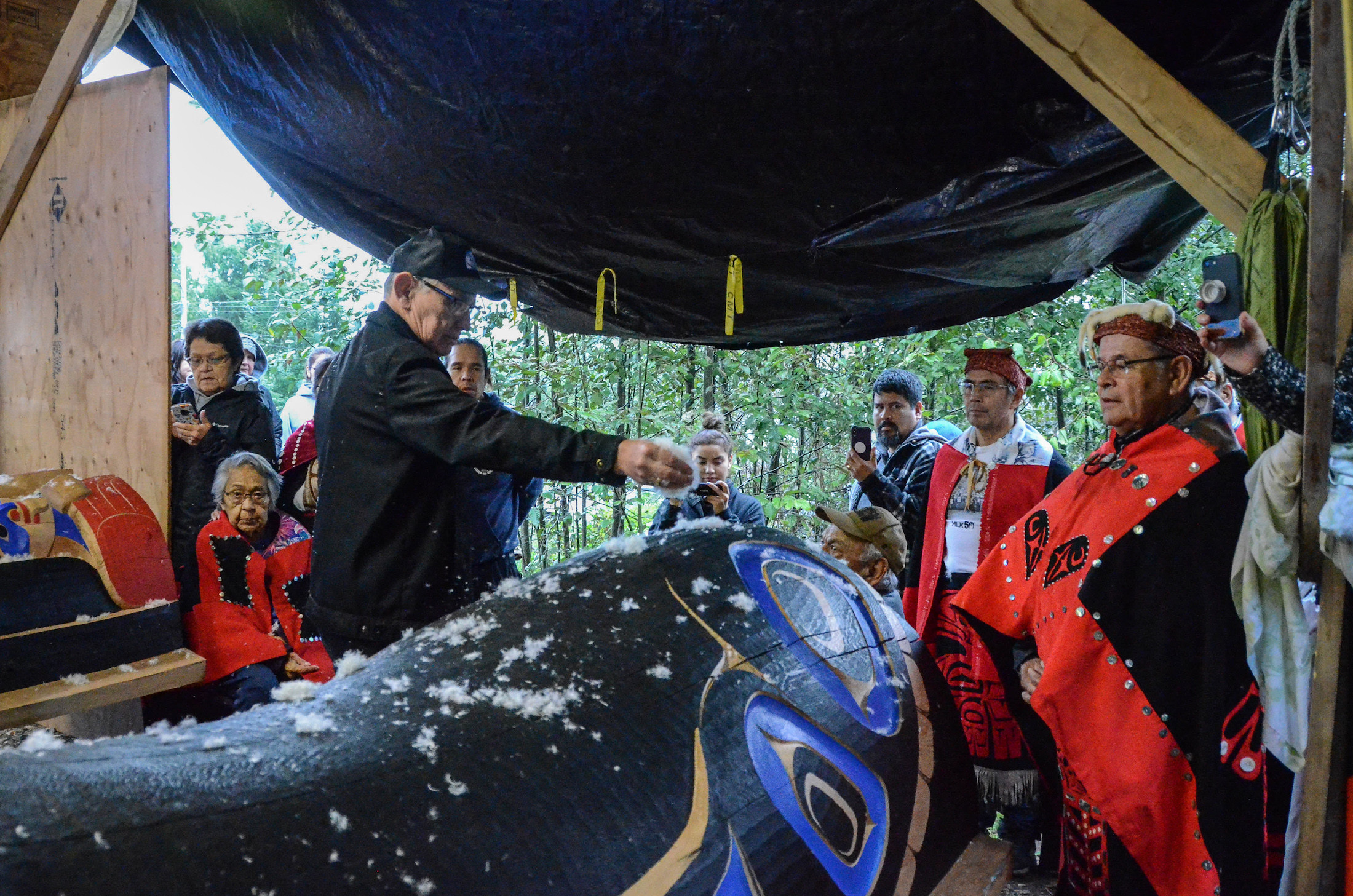
Haíɫzaqv yím̓ás (hereditary chiefs) spread eagle down to bless the house posts for Gvákva’áus Haíɫzaqv on Oct. 2, 2019. Photo: Kyle Artelle
For Chief Slett, the Heiltsuk big house is a symbol of her people’s resilience.
“Our community is strong,” she said. “I think it will be a healing process as a community, acknowledging the strength and resiliency of our people.”
Nusi said he believes the gathering will have an impact beyond his people’s traditional territory.
“What we do here, what’s happening here on this small little place on the central coast — it’s going to have a ripple effect across the whole earth,” Nusi said, adding that while the Heiltsuk have a responsibility to guard their teachings, they also have a duty to share them, especially with others who have lost their connection to land and place.
“It’s going to impact the central coast, our neighbouring tribes, giving them medicine, inspiration and energy too.”
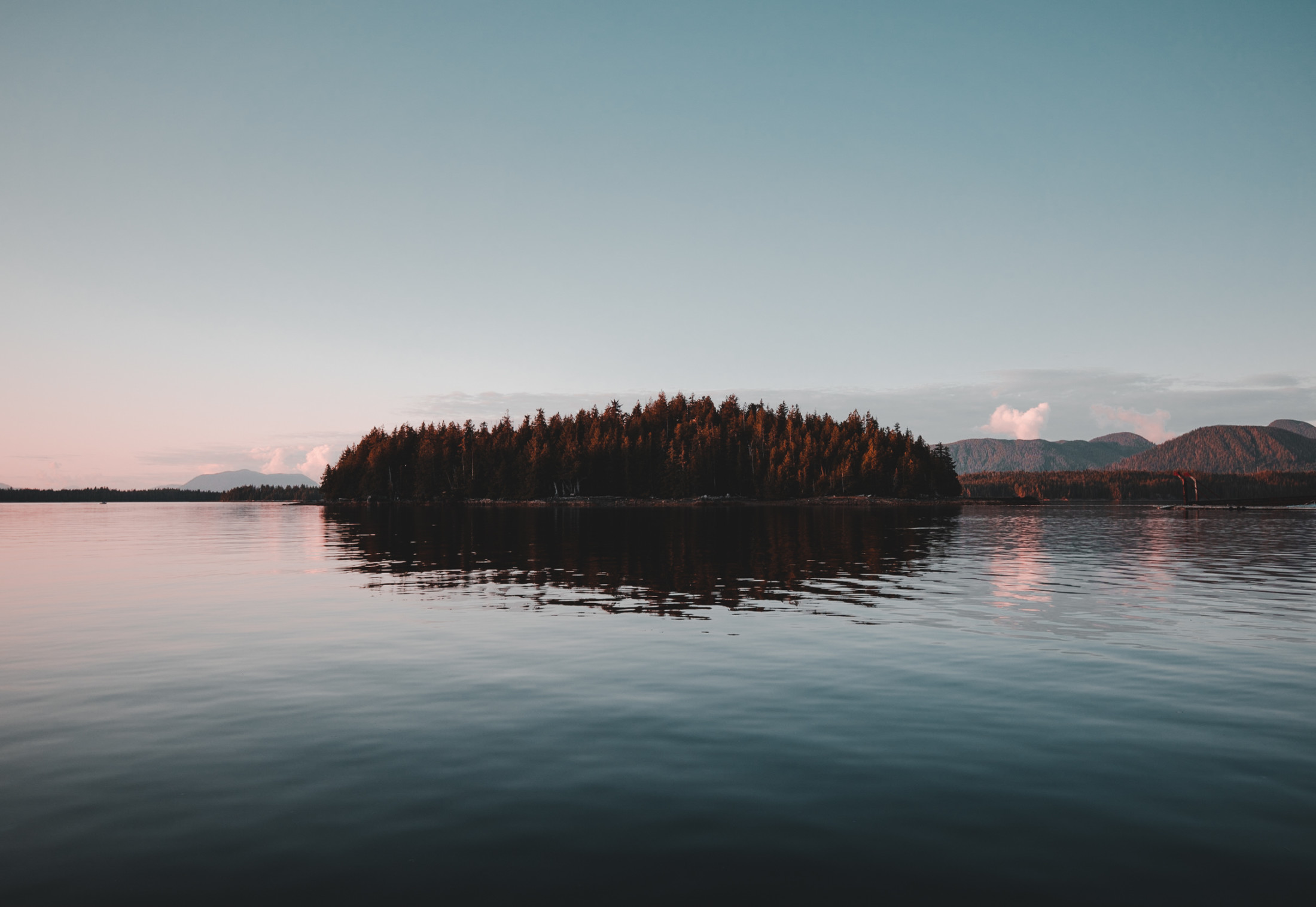
Bella Bella, B.C., the traditional territory of the Heiltsuk Nation. Photo: Louise Whitehouse / The Narwhal
Thinking about the upcoming gathering, elder Liz Brown finds herself recounting all those former ceremonies, the details of which she’s stored in her memory.
She remembers the close attention she paid during weddings especially — the blankets, the gifts and carefully counted place settings, laid on crocheted tablecloths.
She recounts the Bella Bella concert band, and how women adorned in dark blue shirts and white tops emerged with ladles in their hands. She says there were times former hereditary chief Moody Humchitt would rise to speak in front of her community and they would fall into a deep, resounding silence.
Brown’s memory has housed so many important cultural moments. Now the big house will too.
“I’m sure at the end of the week, we’ll all be super tired,” Brown said, adding, “but we’ll also be super happy.”
Get the inside scoop on The Narwhal’s environment and climate reporting by signing up for our free newsletter. When I visited my reserve, Moose Factory,...
Continue reading
Xatśūll First Nation is challenging B.C.’s approval of Mount Polley mine’s tailings dam raising. Indigenous...

As the top candidates for Canada’s next prime minister promise swift, major expansions of mining...

Financial regulators hit pause this week on a years-long effort to force corporations to be...

